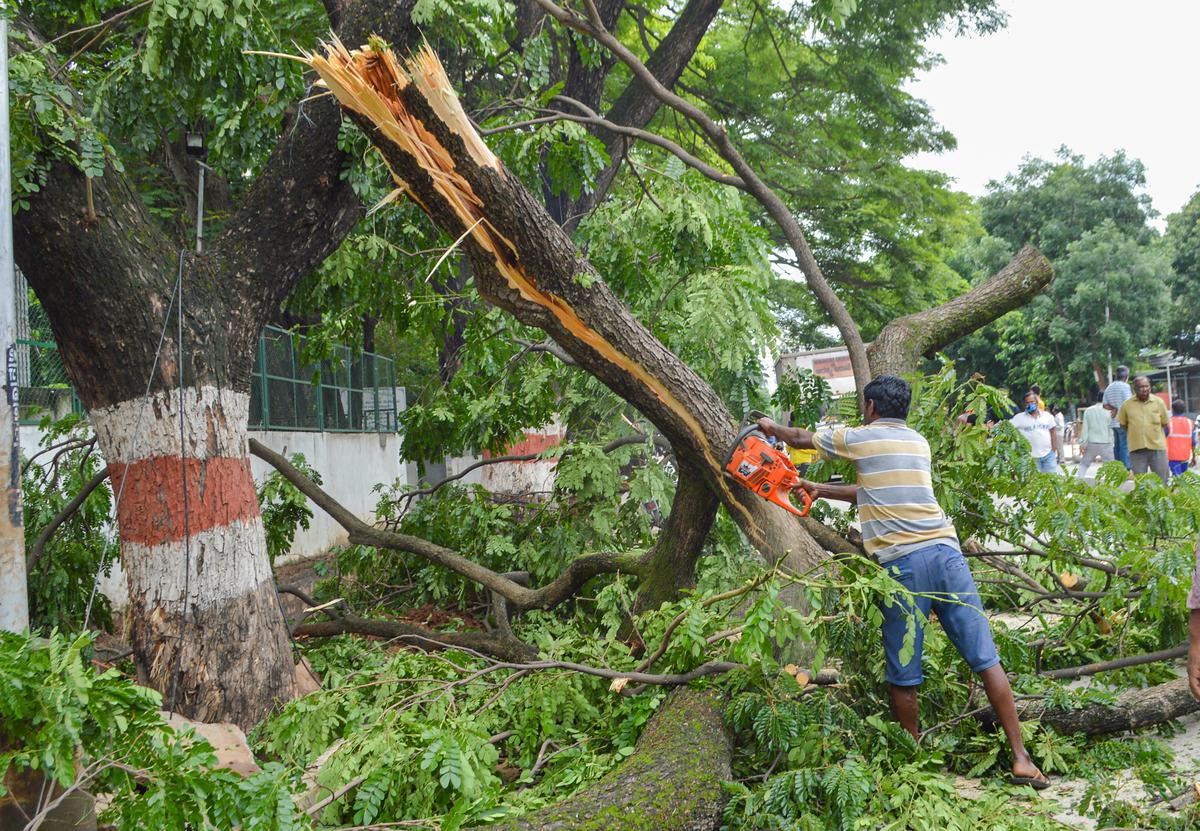The heavy rain that lashed the city on Tuesday night left the most low-lying areas and even key arterial roads inundated, throwing life out of gear. It was only by Wednesday evening that the roads on the water were receded or the pumped out, which meant the traffic snarls through the day.
The Mysuru Road breached on the Vrishabhavathi valley of the retention wall leading to some locations flooding. Many SWDs overflowed and flooded streets.
With water levels not even the next day, civic and fire officials had to pump motors to pump out water.
Sources in the Fire and Emergency Services said they had deployed men and machinery at more than 40 locations, including Basava Layout, Horamavu, Pai Layout, and Doddanekkundi Road to pump water out of the streets and basements.
“The rate at which the water has been receded is very slow, as most stormwater drains are full, their retention capacity is reduced, and the water is not flowing into them. At many places, works are under way in the drains, blocking entry points, ”explained a senior fire official.

Mysuru Road saw heavy flooding owing to the downpour. | Photo Credit: K. MURALI KUMAR
Similar was the situation on many TenderSURE roads, like the UB City street that saw almost waist-level water. Many of the recently completed Smart City roads also saw severe waterlogging.
‘Run-off’
BS Prahlad, Chief Engineer (Road and Infrastructure), said the streets on the water were not flooding but were “run-off” due to the downpour.
“The drain is technically called reaction time for the run-off water to be recovered. The reaction time is prolonged due to various causes, including the amount of run-off in the time window, the rain lashed at the particular point, and the avenues for the water to recede. All factors contributed to the longer reaction time, ”he said.

Bruhat Bengaluru Mahanagara Palike workers cutting a tree that got uprooted after overnight rain on Wednesday. | Photo Credit: PTI
“Any city, whatever its quality, will have a downpour during the run-off water. Over 94% of the surface area of the city has crossed the concrete, leaving a little scope for water to seep into the ground. Similar to cities such as Tokyo, we need to create water retention and recharge facilities on the road to avoid even a flood, such as extreme events for which they are not created. We need to create water recharge wells on the streets, so that we capture the rain water, avoid flooding, and even recharge the underground water table, ”Mr. Prahlad added.
Knee-deep stagnant water that had never been seen before.
Chief Civic Commissioner Tushar Girinath said that more than a quarter of the rainfall, it was a shorter duration led to widespread damage. “Moreover, these are pre-monsoon lives. Drain works are the most common parts of the city in preparation for the monsoon. We have set up a deadline of June 1 for them to clear drains and vacate. So the rain led to overflowing drains in some places, ”he said.
More rain expected
More heavy rain is expected over the next two days. The Indian Meteorological Department has issued a red alert for the next two days for several districts including the coastal districts and Hassan, Chikkamagaluru, and Shivamogga districts for Thursday and a yellow alert (heavy rainfall). IMD has forecast isolated heavy rains / thundershowers over the city for the next two days.
Chief Minister Basavaraj Bommai said he had instructed officials to take adequate precautionary measures to mitigate the effects of heavy rain.




